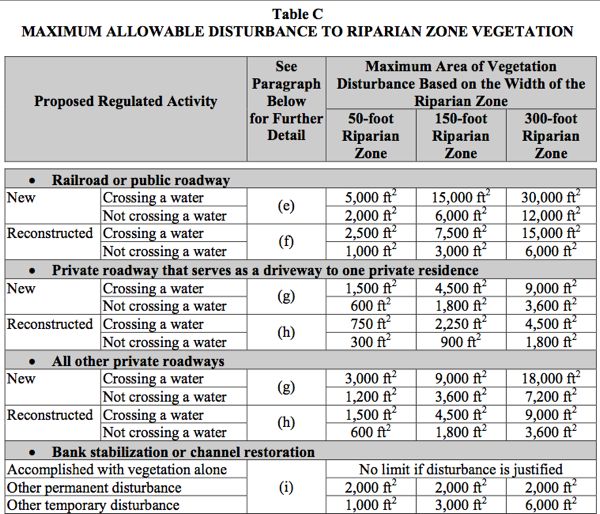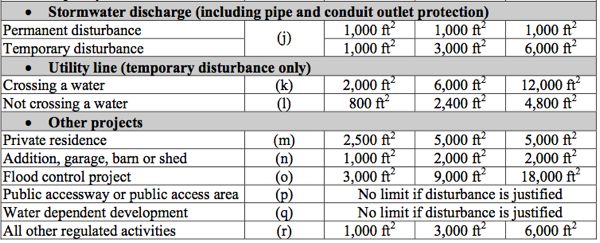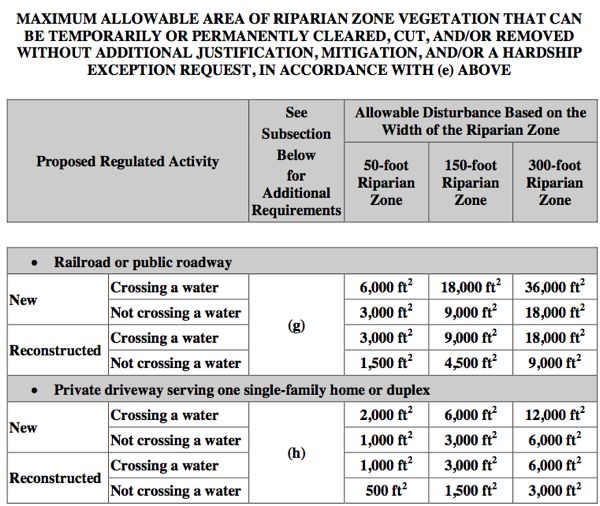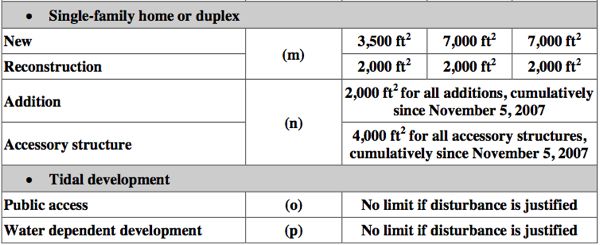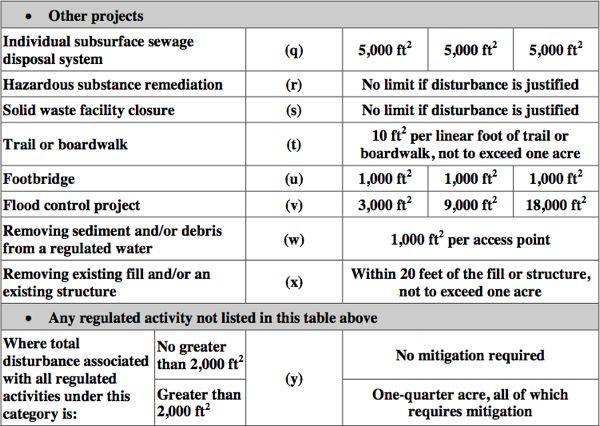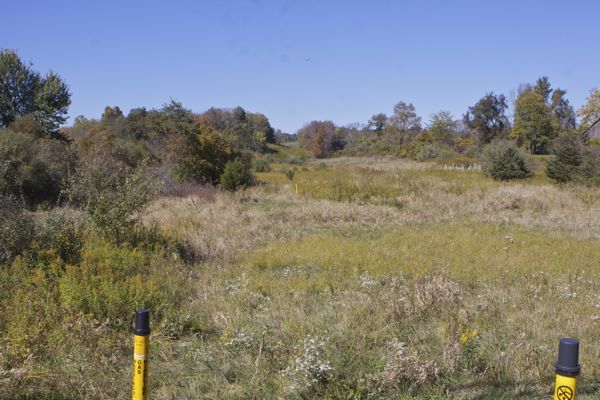Christie DEP Allows Huge Increases In Stream Buffer Disturbance For Development
Increased Disturbance Only a Floor – Limits Can Be Waived Completely
You Will Be Shocked By New “Limits” for Pipelines
[Update below]
Forget that the Christie DEP proposes to repeal the Category One stream buffer protections and replace them by much weaker “riparian zone” rules – or even eliminate them entirely with a waiver and mitigation scheme.
Let’s look today only at the proposed increases in allowable disturbance of a riparian zone under existing stream encroachment regulations (see Table C on page 88) and compare them to the proposed new allowable disturbances (see Table 11.2 on page 690 – 691).
Pipeline opponents might want to look closely at current maximum disturbance for a utility line stream crossing of 12,000 square feet in Table C and compare that with the proposed new scheme in Table 11.2 below.
The proposed new scheme would set a vague “limit” of 30 square feet of disturbance per linear foot of utility line – but how would that be measured? Just the segment through the riparian zone? Or the total length? For a pipeline perpendicular stream crossing across 600 feet of riparian zone that’s 18,000 square feet (current in 12,000 a 50% increase). But I think pipeline ROW’s are wide than 30 feet, no? Assume that would trigger a waiver and mitigation scheme, not a permit denial.
Proposed new rules also would allow 6,000 square feet of disturbance for access to the project, per stream crossing on C1 designated streams with 300 foot buffers.
Finally, the proposal would allow unlimited riparian disturbance for activities called “reconstruction, upgrade, expansion, or maintenance”. Just Think of what Penn East’s lawyers will do with that!!!
The pipeline rollbacks alone are sufficient to strike these proposed rules down as inconsistent with legislative intent. And abuses like that are across the board for virtually all regulated activities.
Here are current limits on riparian zone disturbance:
Now here are the Christie DEP proposed ACROSS THE BOARD INCREASES (see Table 11.2, on page 690):
At least 4 critical things jump right off the page:
1) The allowable disturbances are no longer “maximums” – they are in fact floor minimums, and can be increased or waived completely
2) the allowable square feet of disturbance increases across the board for each activity
3) new activities are allowed to disturb riparian buffers
4) some limits on disturbance are waived completely
DEP issues thousands of stream encroachment permits every year – what these proposed increases in allowable disturbance and waivers mean in the real world is that NJ will lose thousands of acres of environmentally sensitive riparian zones.
That means more flooding and more water pollution.
Period.
That alone is sufficient to strike these proposed rules down as inconsistent with legislative intent.
Unless DEP can show where the Legislature has enacted a policy directing them to do so.
These Tables should be downloaded, printed out, and on the desk of every legislator and environmental reporter well before Monday’s Senate Env. Cmte. hearing.
[Update: 10/14/15 – the proposed allowance of 30 square feet of disturbance for each linear foot of pipeline is not a standard or a limit, and it literally invites pipelines and utilities into riparian zones.
In theory, it would allow a pipeline to route through a buffer – parallel to the stream – for miles. That’s why my original post included an illustration of a 20 mile long pipeline, which could disturb 72 acres. I deleted that because I thought it might not be realistic.
But the Elizabethtown Gas pipeline looked like it ran through the buffer of Sidney Brook for a far as the eye could see from the ground (maybe 3,000 feet). If that all were in buffer, that would be well over 10,000 square feet for that small segment alone. It was tough to see where the stream and the buffer were from the ground. Look:
